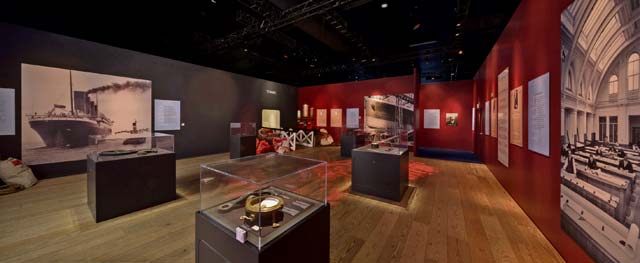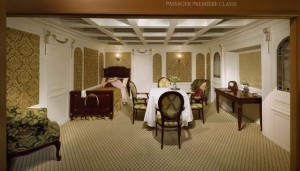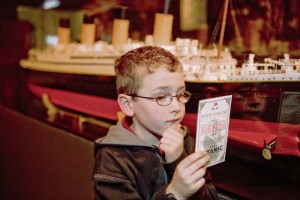
Visitors can explore historical facts and original objects from the bottom of the sea and the reconstruction of several areas of the ship.
The Historical Museum of the Palatinate in Speyer presents “Titanic — The Exhibition: Real Discoveries, True Fates,” until June 28.
The main attractions of this exhibition are the almost 250 original artifacts that have been salvaged from the seabed through a series of deep sea expeditions. These objects include personal belongings of the passengers, furnishings and equipment of the ship and parts of the doomed ship itself. Alongside these original objects, lavish stagings and reconstructions of ship compartments invite visitors into an impressive journey of discovery of a bygone era.

Exhibitions regarding this subject have previously been held in Paris, Amsterdam and Brussels. Speyer is, however, the first German venue for this newly arranged exhibition, which displays original objects taken from the Titanic’s wreckage. Starting with a consideration of the world around the year 1900, major aspects of this exhibition include the presentation of the construction of the ship, its furnishings and equipment, as well as content devoted to the class differences of the passengers on board, the series of events that occurred leading to its disastrous demise and the manner in which, years later, the objects presented in this exhibition were salvaged from the seabed.
Additionally, the Historical Museum of the Palatinate devotes part of the exhibition to the biographies of the German passengers on board as well as to the circumstances that have led to the unprecedented myth, which persists to his day, surrounding the doom of this supposedly unsinkable ship.

Still, today, over 100 years after its doomed maiden voyage, the name of this ship is at once synonymous with inconceivable tragedy and a sustained shock to humanity’s belief in almighty technology. After considerable research, it was only in 1985 that the location of the shattered wreck could be pinpointed. In the course of many expeditions, carried out between 1987 and 2010, many relics of this catastrophe were salvaged and brought up from the seabed 3,800 meters below sea level. Besides the presentation of pieces of the actual ship, such as rivets, lamps and tiles, accouterments, such as tableware and glassware, as well as private objects, such as personal papers, jewelry and personal body care products, are all on show at this exhibition.
An accompanying booklet is available for this exhibition. During the course of this exhibition, the Historical Museum of the Palatinate is open daily from 10 a.m. to 6 p.m.
Further information pertaining to this exhibition and its considerable accompanying program can be found at www.titanic-dieausstellung.de.


